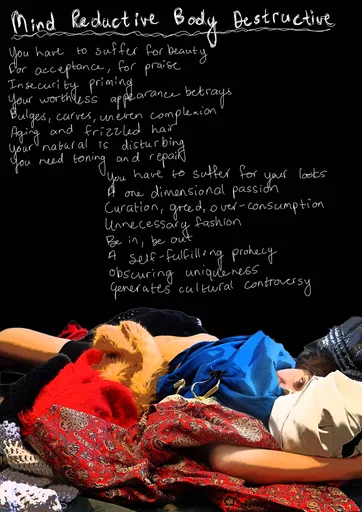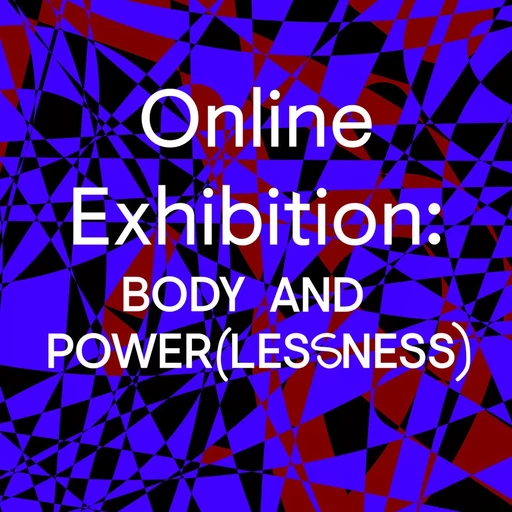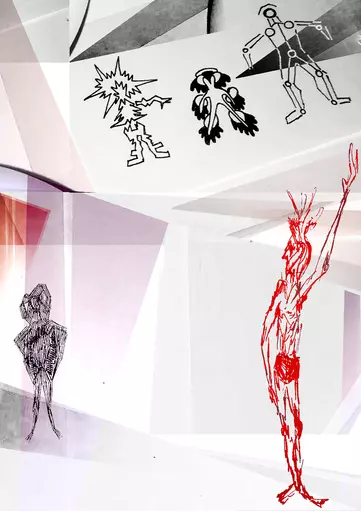Neurodiversity
by Floris Grondman and Stephanie Luka
videotopic: Online Exhibition: Body and Power(lessness)
We have invited Floris Grondman and Stephanie Luka, students at the Master of Arts in Education in Zwolle, to share their work. They have been working on a special research project on neurodiversity.
Small, Big and Different Brains
We all have small brains and big brains and if we look closely, we all have different brains as well. Floris Grondman is a music and art educator in primary and secondary education and Stephanie Luka works as a producer and lesson developer at the education department of IDFA. For their part-time study at the Master's in Arts Education in Zwolle, they combine their expertise in the field of image creation and social media with the subject of neurodiversity. Floris explains "Neurodiversity is a collective term for abnormal or differently functioning brains. This term emphasises the social aspects of abnormalities such as autism, AD(H)D, obsessive-compulsive disorders and Tourette's syndrome, and thus distinguishes itself from more pathological approaches."
"Among neurodiverse young people, the social media platform TikTok is currently being used by young people to empower others and to be empowered. These young adults have been diagnosed or have characteristics of a neurological disorder and create a lot of content about their experiences, almost exclusively. In doing so, they take firm control and critically examine different views on their abnormalities."
Stephanie believes "Neurodiverse people have to deal with often invisible characteristics that in many cases have a great impact on various aspects of their lives. How do they unite and represent themselves on social media? How do they make what society asks them to hide visible on TikTok? In our project, we investigate the portrayal of and by neurodiverse internet users and the possibilities of giving their voices more impact by bridging online and offline (experience) experts."
This work is part of our online exhibition The body and Power(lessness), on how we physically experience autonomy, power(lessness), (in)justice, care and collectivity. The body and Power(lessness) is our theme of this study year and we invite ArtEZ students to join us in our research and contribute with their own work (video, text, podcast or any other digitally shareable) for an online exhibition.
Small, Big and Different Brains
We all have small brains and big brains and if we look closely, we all have different brains as well. Floris Grondman is a music and art educator in primary and secondary education and Stephanie Luka works as a producer and lesson developer at the education department of IDFA. For their part-time study at the Master's in Arts Education in Zwolle, they combine their expertise in the field of image creation and social media with the subject of neurodiversity. Floris explains "Neurodiversity is a collective term for abnormal or differently functioning brains. This term emphasises the social aspects of abnormalities such as autism, AD(H)D, obsessive-compulsive disorders and Tourette's syndrome, and thus distinguishes itself from more pathological approaches."
"Among neurodiverse young people, the social media platform TikTok is currently being used by young people to empower others and to be empowered. These young adults have been diagnosed or have characteristics of a neurological disorder and create a lot of content about their experiences, almost exclusively. In doing so, they take firm control and critically examine different views on their abnormalities."
Stephanie believes "Neurodiverse people have to deal with often invisible characteristics that in many cases have a great impact on various aspects of their lives. How do they unite and represent themselves on social media? How do they make what society asks them to hide visible on TikTok? In our project, we investigate the portrayal of and by neurodiverse internet users and the possibilities of giving their voices more impact by bridging online and offline (experience) experts."
This work is part of our online exhibition The body and Power(lessness), on how we physically experience autonomy, power(lessness), (in)justice, care and collectivity. The body and Power(lessness) is our theme of this study year and we invite ArtEZ students to join us in our research and contribute with their own work (video, text, podcast or any other digitally shareable) for an online exhibition.
related content
video – 27 okt. 2021
more_____, less_____
Short dance film by Daria Titova and Ekaterina Konovalova
blog – 15 dec. 2021
My mind is reductive. My body destructive.
Manifesto by Lianca van der Merwe
refered to from:
news – 29 sep. 2021
Open call for Online Exhibition Body and Power(lessness)
blog – 17 jan. 2022


